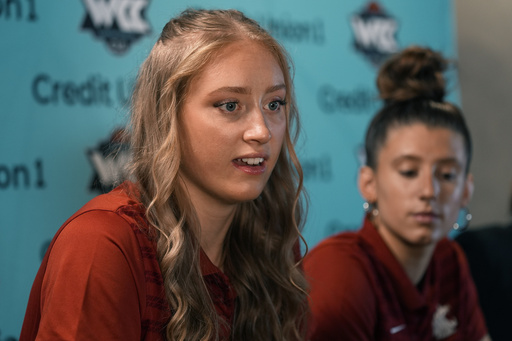
The Pac-12 Conference is unlikely to regain its former stature despite attempts at revitalization.
“I never imagined I would witness the collapse of the Pac-12,” remarked Oregon State coach Wayne Tinkle. “It’s incredibly disappointing, but we find ourselves in this situation.”
This statement has both figurative and literal implications.
Tinkle made these remarks during the West Coast Conference (WCC) basketball media days, an event that might have seemed irrelevant for Oregon State’s coach in the past. However, with only Oregon State and Washington State remaining as members of the Pac-12 after a significant exodus of ten schools to other conferences, this moment is unprecedented.
For the next two seasons, these two institutions will participate in basketball as affiliate members of the WCC, allowing them to compete for men’s and women’s titles. After that, they are set to return to the Pac-12 when five Mountain West schools — Boise State, Colorado State, Fresno State, San Diego State, and Utah State — join the conference in 2026. Gonzaga will also depart the WCC that year, competing across all sports except for football, leaving the Pac-12 just one full member short of being recognized as a Bowl Subdivision conference.
“Looking at the new teams joining the Pac-12, it will form a very strong basketball league,” stated Washington State coach David Riley. “Numerous teams have reached the Final Four. Given how many teams participated in the NCAA Tournament last year, it’s going to be fiercely competitive every game.”
In the last four years, Gonzaga and San Diego State reached the national championship game, with Gonzaga boasting the longest active NCAA Sweet 16 appearance streak at nine years. On the women’s side, both Gonzaga and Oregon State advanced to the second weekend of the NCAA Tournament last season.
With the revamped Pac-12 still two years down the line, both the Beavers and Cougars are concentrating on their new opponents.
In the men’s division, Washington State was projected to finish fifth, while Oregon State was slated for seventh. For the women’s division, the Cougars are predicted to place second and the Beavers fourth.
“I believe it will be competitive,” assessed Kamie Ethridge, the women’s coach at Washington State. “When you evaluate the rosters, there has been a great deal of turnover. I’m not fully familiar with the league yet to say who has gained what, so I think every team has something to prove. We’re among those teams that have a lot at stake.”
While coaches must adjust to new opponents, the evolution of college athletics influenced by the transfer portal has made this transition more manageable compared to a decade ago. The Oregon State women’s team alone has seen three of its starting five depart, including star player Raegan Beers.
“Change is a constant in college sports each year,” coach Scott Rueck noted. “It’s just a matter of who you play and how you adjust. This season will certainly have its differences, but I’m excited for what’s ahead.”
However, the current dynamics may not align with what many athletes envisioned when they chose to join Oregon State or Washington State.
They anticipated matches against formidable rivals like UCLA and Arizona but are now set to compete against teams such as Pepperdine and Santa Clara. Adaptation is crucial for players in light of these developments.
“I wasn’t certain where we would land, but I genuinely believe we’re in a good position,” said Washington State senior Tara Wallack. “The Pac-12 will make a comeback. Although I won’t be here to see it, it promises great prospects for the program.”
Michael Rataj, a junior from Oregon State who hails from Germany, admitted he wasn’t fully aware of the conference’s history when he joined in 2022. As other players left during the Pac-12’s downfall, Rataj opted to remain in Corvallis.
“I honored my commitment to stay,” Rataj explained. “My coach is working hard to bring back that winning tradition. He has provided us, as freshmen, ample playtime opportunities… I was just a kid from Germany who always wanted to play college basketball, and he made that dream a reality.”
Tinkle will guide Rataj and the team through this transitional phase, which includes forging a competitive rivalry with Gonzaga. This matchup will carry over into the revamped Pac-12. Notably, Tinkle’s daughter, Elle, played for Gonzaga from 2012-2017 and is married to Jeremy Jones, a former Gonzaga forward from 2015-2019.
“On the sidelines, she has at least eight points of influence per game,” Tinkle humorously noted. “Elle is devoted to the Beavers, and it will be exciting to see her and Jeremy going head-to-head, especially given their friendly rivalries.”
